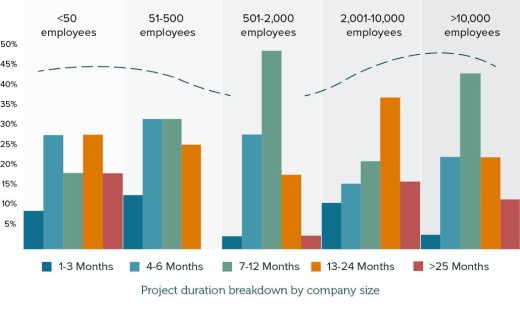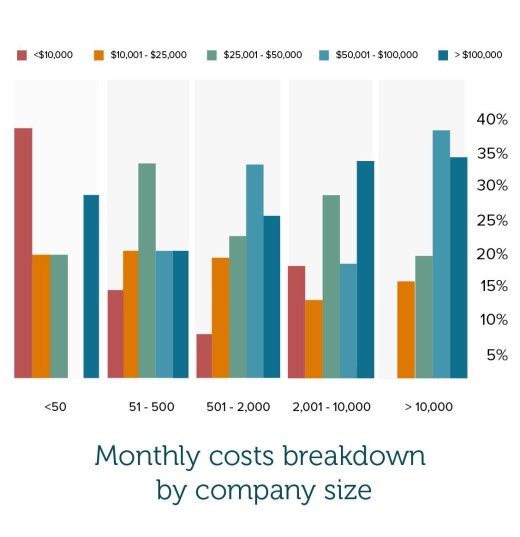
Virtually every brand today is, to at least some degree, in the digital product development business, whether it’s designing an ecommerce shopping experience for mobile apps, bringing supply chain management capabilities to tablets in a warehouse or simply maintaining a website for investor relations. But little is known about digital product development processes from industry to industry and across organization sizes.
What does product development actually look like in the trenches? How does building products differ among organization sizes?
We surveyed more than 100 product managers to answer these questions and more, and I think four findings stand out.
Enterprise has caught up, but at a cost
When it comes to product management, it’s quite common for enterprises to adopt methodologies first championed by smaller, more nimble companies. So what has that translated into? Despite what many readers might expect, startups and SMBs don’t get their products to market any faster than large organizations.

Before you go thinking that enterprises are suddenly as nimble as startups, consider a few other points. Without comparing the actual products that were built, it’s impossible to know if startups are shipping three-times as much code as their enterprise counterparts in the same timespan. Further, speed-to-market comes at a hefty cost as organizations get larger:

So while large organizations no longer spend years to get products off the ground, it’s not necessarily efficiency that has enabled them to move faster. It’s larger budgets and investments in digital.
Product managers are getting their hands dirty
Investments in digital products have translated into massive in-house capabilities. More than 80 percent of product managers we surveyed reported doing the heavy lifting internally, with most teams involving more than two engineers.

While this doesn’t necessarily mean that product managers need to be expert software engineers, it does mean that they have a strong understanding of technology and development methodologies. After all, the top tools product managers reported using all involved project management, code deployment, or product documentation:

Budgeting hasn’t evolved much
Few companies leverage the differences between digital and physical product development to budget more efficiently.

More companies together have no defined process, don’t budget, or use a ‘best guess’ than companies that budget iteratively. This is unfortunate because digital products can be tested and validated iteratively, enabling product teams to gain feedback and fold it into a new version as they go. Being able to budget iteratively is critical for allocating resources and even being able to kill a product or feature without wasting resources when it becomes apparent that users don’t want it.
A ton of products fail
“Fail forward” isn’t just an empty mantra. A whopping 40 percent of our respondents reported recently launching a failed product and were willing to talk about it (there could be many more who weren’t willing to discuss).
The overwhelming sentiment from those who failed was that a lack of adopting new methodologies was the driving cause behind the failures. One respondent summed it up:
I practice Lean and use extensive prototyping but my company doesn’t formally embrace this approach; we have an informal agile process and overall product strategy tends to get lost in lieu of releasing endless features defined by customer or internal requests. It’s the danger of poorly executed Agile brought to life.
While mastering best practices and methodologies is critical for product managers, it’s just as if not more important to get your organization to buy-in.
For more interesting findings from our survey, check out the full report: Benchmarking Digital Product Development Costs.
Image credit: Shutterstock
➤ Read Next: This is how Apple’s top secret product development process works
Get the TNW newsletter
Get the most important tech news in your inbox each week.





